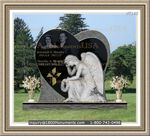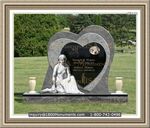|
What To Learn When Learning Jewish Funeral Traditions
According to Jewish funeral traditions, the deceased should never be left unattended. A watchmen, or "Shomer" stays with the body from death until the funeral and burial. Usually the family will stay with the deceased as well. The first person to call upon a death is the rabbi, who will set the time of the funeral. Funerals are held in the synagogue or temple, however many modern Jewish families are opting for graveside services only.
The Jewish custom calls for a closed casket and no viewing of the body because it is disrespectful to look at a person that is unable to look back.
Unless it is required by local laws, Jews do not take part in the embalming process, which is used for sanitation and temporary preservation of the body. Instead, the sacred society, called the Chevra Kadisha, prepares the body for burial. They perform the Taharah, a type of Jewish purification.
The body is first ritually bathed and then dressed in the Tachrichim, or shrouds, the traditional burial garment. It is a simple white garment that contains no pockets. This symbolizes the fact that the deceased takes nothing with them when they depart this world and that God will not judge on material possessions but rather their deeds and merits.
It is tradition that the casket be of wood only with no metal or other adornments. It is also customary to not have floral arrangements at the funeral as these are seen as unnecessary.
The funeral typically takes between 20 and 30 minutes in which the rabbi with conduct a reading of the Psalms, other chosen Scripture readings, and a reading of the eulogy. Prior to or following the service, family and other mourners conduct the K'riah, or rendering of the garment, where they tear their clothes or place a black ribbon on their clothes. This shows others that they are in mourning for the deceased. These Jewish funeral traditions have been somewhat modified over time, but are generally followed by most Jews.
|
|



























